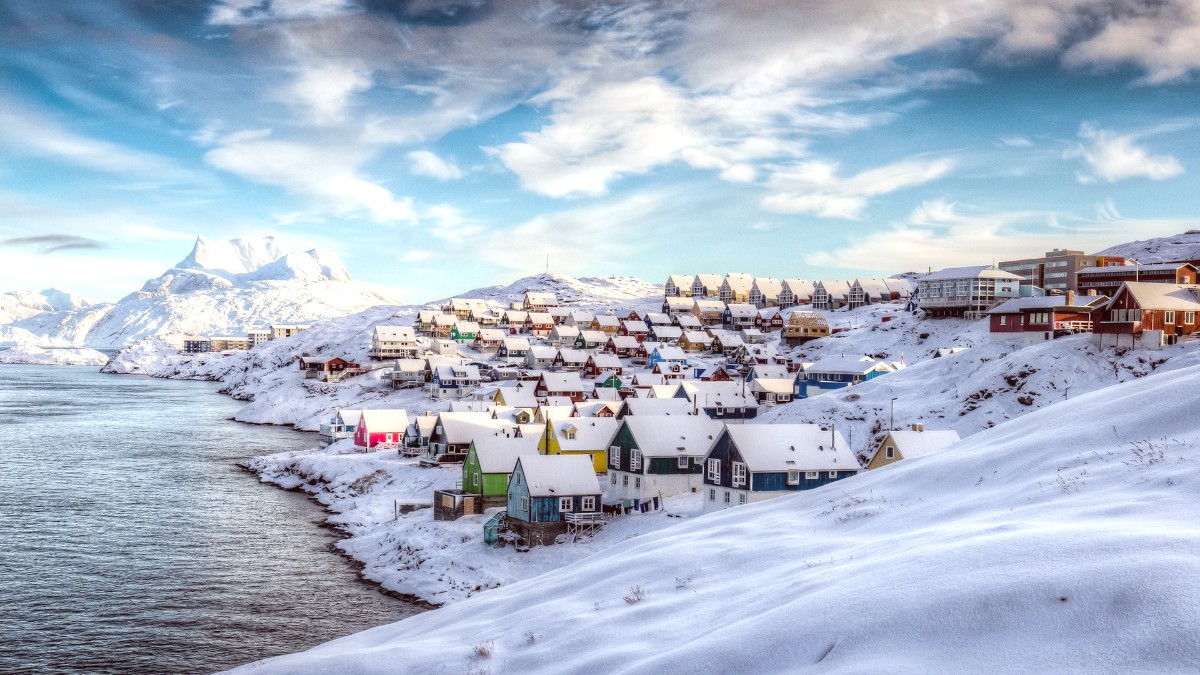
Greenland
Greenland is part of the Kingdom of Denmark but operates its own immigration rules and is not a part of the Schengen Area. Citizens from Nordic countries, EU/EEA, and many other nations (including the US, Canada, Australia, NZ, Japan, South Korea, UK) generally do not require a visa for tourist stays up to 90 days within a 180-day period.
Citizens of countries typically needing a visa for Denmark will likely need a separate visa for Greenland. Applications are handled at Danish diplomatic missions. The process mirrors a Schengen visa application, but specify Greenland as your destination. Consult IVisa or VisaHQ for more information.
No specific entry fees apply for tourists entering Greenland. Immigration procedures upon arrival at Nuuk Airport (GOH) are standard. Officials will check your passport and any required visa documentation. The process usually proceeds smoothly.
Most general tourist activities around Nuuk do not call for special permits. However, expeditions to remote, uninhabited areas, or for scientific research or filming, may involve permits from Greenlandic authorities. Consult your tour operator or Visit Greenland for specific activity requirements for off-the-beaten-path adventures.
Blizzards & Rapid Changes
Can cause flight delays/cancellations and difficult outdoor conditions. Check forecasts.
Always check forecasts and be flexible with plans. Weather changes rapidly.
Slippery Surfaces
Slippery conditions due to ice and snow are common in winter.
Wear appropriate footwear with good grip on all surfaces. Caution is prudent.
Glacier Calving
Rare in Nuuk, but tsunamis from calving glaciers have occurred elsewhere in Greenland.
Nuuk's deep fjord system offers some protection. Local authorities monitor such risks.
Pros: Best weather for outdoor activities like hiking, fjord cruises, and whale watching. All tourist services are fully operational. Extended daylight supports longer exploration. Whale watching reaches its peak during these months.
Cons: Higher prices for flights and accommodation. Expect more people at popular attractions and tours.
Pros: Fewer people, creating a more tranquil experience. Potentially lower prices for flights and accommodation. Good for hiking, especially in early autumn with changing foliage. September and October offer the first opportunities for consistent Northern Lights viewing. May presents a chance to see melting ice.
Cons: Weather may be unpredictable, with cooler temperatures, increased wind, and a higher chance of rain or early snow. Some tours may operate on limited schedules.
This is the best time for Northern Lights displays, especially December to March, given the long periods of darkness.
Opportunities for winter activities like cross-country skiing around Nuuk.
Experience a truly authentic Arctic winter, often with fewer tourists.
Travel and accommodation prices are generally lowest during this period.
Extreme cold. Daylight hours are very short or nonexistent. Outdoor activities are limited to those suitable for snow and ice. Some services may close.
Nuuk is a very safe destination, yet preparing for its unique environment and knowing how to access healthcare is important.
No specific vaccinations are mandatory for entry to Greenland, but routine vaccinations are a good idea. The Arctic environment introduces specific health considerations, including risks from cold, dehydration, and sun exposure.
Nuuk has good medical facilities. Queen Ingrid's Hospital is the main medical facility, offering comprehensive care. Medical staff possess strong training.
Tap water in Nuuk is safe and of excellent quality, sourced from clean mountain springs. Drink directly from the tap without concern. Food hygiene standards in Nuuk's restaurants and shops rank high, mirroring those in Scandinavia.
Align your visit with your preferred activities for a truly memorable trip.
For whale watching, fjord cruises, and hiking, June to August offer optimal conditions. The warmer temperatures and abundant daylight are advantageous. Kayaking is also best suited for July and August in the calmer fjord areas.
Northern Lights viewing opportunities are highest from September to March, given the necessary dark, clear nights for the aurora's visibility. Dog sledding and cross-country skiing depend on sufficient snow cover, typically available from December to April.
Warmest weather. All tourist services are fully operational. Long daylight hours maximize exploration. Whale watching peaks.
Optimal conditions for most outdoor activities.
Higher prices and more people at popular spots.
Fewer crowds, more tranquility. Potentially lower prices. Good for hiking with changing foliage (Sept-Oct).
First opportunities for consistent Northern Lights viewing.
Weather can be unpredictable, with cooler temperatures, increased wind.
Best time for Northern Lights. Winter activities like cross-country skiing. Authentic Arctic winter, fewer tourists.
Lowest prices for travel and accommodation.
Extreme cold, very short daylight or continuous twilight. Some services may close.
| Category | Average Cost (DKK) | Average Cost (USD) |
|---|---|---|
| Hostel Dorm Bed | 300-400 | 42-56 |
| Mid-range Hotel Room | 1,000-2,000 | 140-280 |
| Fjord/Whale Watching Tour (3-5 hrs) | 800-1,500 | 112-210 |